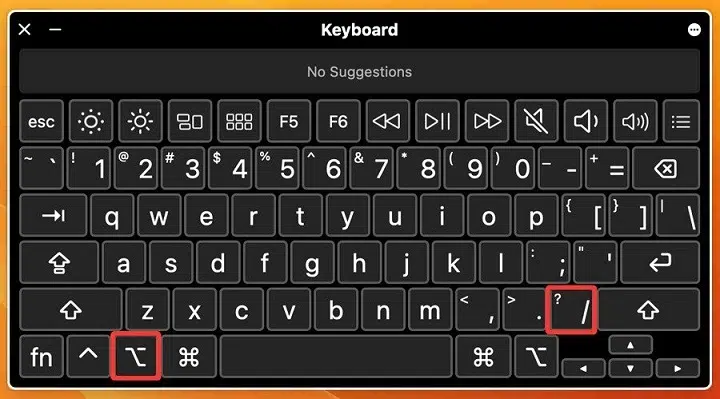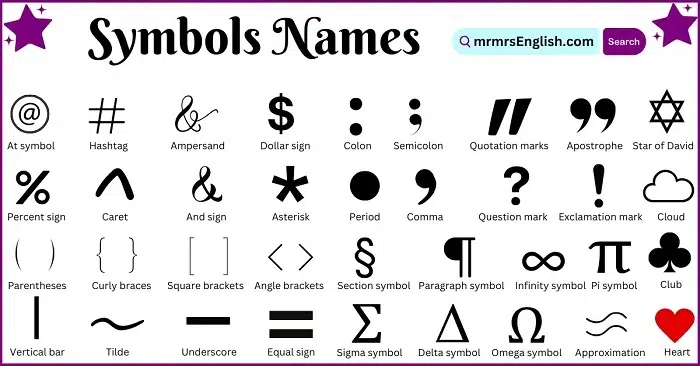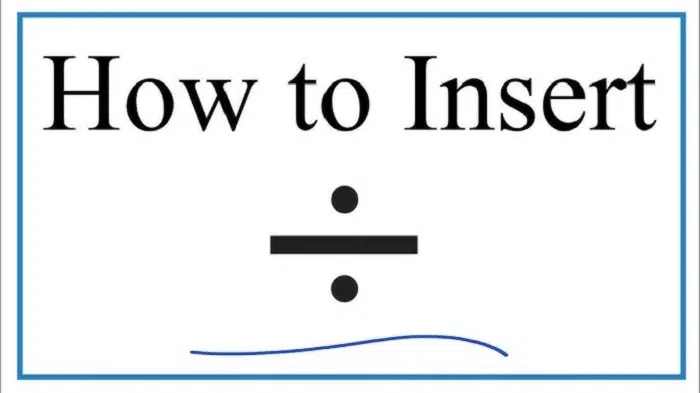Symbols are small but powerful elements of writing, math, and internet communication. One of the most used is the divide symbol (÷), the division symbol in mathematics and common math. Despite its simplicity, where it is located or how to type it on a computer or mobile phone keyboard is confusing for most users.
Divide symbol is used in offices, schools, science, and even business reports. It helps to represent mathematical division and also sometimes appears in text, spreadsheets, or programming work. It is important to be aware of what the divide symbol is, how it came about, and how to properly type it for someone who is handling numbers or documents.
This article explains the meaning, history, keyboard shortcuts, and uses of the divide symbol in simple terms.
What Is the Divide Symbol
The divide symbol (÷) or obelus is a math symbol that indicates division or separation. It is placed between two numbers to show that one number is divided by another.
Example:
8 ÷ 2 = 4
It indicates eight divided by two equals four.
There exist other types of divisions with the use of a slash (/) or horizontal line in fractions. Yet the obelus (÷) remains the most pictorially comprehensible and common symbol for elementary arithmetic.
Name and Meaning of the Symbol
The division sign (÷) comes from Greek obelos, or a little stick or pointed line used to mark. It was used by old printers and scholars as a punctuation mark or divisor before it was used for mathematics.
It is now used chiefly to represent the mathematical process of division, or “divided into equal parts” or “share.”
| Symbol | Name | Meaning |
| ÷ | Divide or Obelus | Division of numbers |
| / | Slash | Also division, used in computers |
| : | Colon | Division sign used in some European countries |
So 12 ÷ 3, 12/3, and 12:3 can all represent the same operation depending on the region or country.
History of the Divide Symbol
The divide symbol (÷) was first suggested for use in mathematics by the Swiss mathematician Johann Rahn in 1659 in his work Teutsche Algebra. Before that, division was represented using other signs or words.
Over time, the obelus was accepted in Europe and America, particularly in schoolbooks and calculators.
Division in scientific study, however, is usually written using a slash (/) or horizontal fraction bar for ease of use and compatibility with electronic devices.
| Year | Development | Use |
| 1600s | Johann Rahn introduces ÷ | Schoolbooks of arithmetic |
| 1800s | Preeminent in learning before its time | Schooling systems |
| 1900s | Typewriters and calculators adopt it | Office and learning |
| 2000s | Unicode introduces divide symbol | Computers and mobile phones |
Now, it is officially Unicode and available on most digital platforms under code U+00F7.
How to Type Divide Symbol on a Keyboard
Tying the divide symbol differs according to the device or program you are using. There are different ways to do so for Windows, Mac, mobile, and Microsoft Word.
1. On Windows Keyboard
With Alt Code:
- Turn on Num Lock.
- Press and hold the Alt key.
- Input 0247 on the numeric keypad.
- Release the Alt key.
You will see the ÷ symbol popping up.
Example:
Alt + 0247 → ÷
Method using Character Map:
- Open Start Menu → Type “Character Map.”
- Find the ÷ symbol.
- Click “Select” → “Copy.”
- Paste it in your document.
2. On Mac Keyboard
Press Option (⌥) + / (forward slash).
The divide symbol ÷ will appear instantly.
This shortcut will work in most Mac programs like Word, Notes, and Pages.
3. In Microsoft Word
Microsoft Word allows it to be easily inserted through menus or shortcuts.
Method 1: Menu Insert
- Go to Insert → Symbol → More Symbols.
- Choose Mathematical Operators.
- Click ÷ and choose Insert.
Method 2: Shortcut Code
- Enter 00F7 and use Alt + X.
Word converts it automatically to ÷.
4. On Android Phones
- Switch to the numerical keypad.
- Press and hold the slash ( / ) or equal (=) sign based on your phone’s keyboard.
- Select ÷ from the popup.
Some keyboards like Gboard or SwiftKey have it under the “symbols” section.
5. On iPhone and iPad
- Tap 123 to open the symbols keyboard.
- Tap the #+= key for more options.
- Find and tap the ÷ sign.
You can also copy it from the internet and paste it anywhere if your keyboard lacks the option.
Divide Symbol in Coding and Computers
In computer programming, the slash ( / ) is mostly employed for division instead of the obelus. The divide sign (÷) is normally avoided because not all compilers and systems recognize it.
Code example:
a = 8 / 2
b = a / 4
In this example, slash is used for divide.
The divide symbol (÷) is used more in educational materials, printed documents, and word processing files than in code or command lines.
| Division Type | Symbol Used | Example |
| Basic math | ÷ | 10 ÷ 2 = 5 |
| Computer code | / | 10 / 2 = 5 |
| Fractions | — | ½ (divides 1 by 2) |
Application of the Divide Symbol in Various Fields
The divide symbol has nothing to do with school mathematics. It’s applied in numerous fields.
- Education:
Students and teachers apply it in textbooks, tests, and explanations to mark division merely. - Finance:
Applied to calculate ratios, percentages, and economic performance. - Science:
Applied in equations of physics and chemistry while dividing figures. - Statistics:
Used within statistical reports to divide data points or calculate averages. - Day-to-Day Communication:
People apply ÷ in text or design to mark equality, sharing, or creative themes like “Love ÷ Time = Memories.”
Also Read: Third Angle Projection Symbol: Meaning, Origin, Use, and Significance in Engineering Drawing
Common Mistakes and Alternatives
People get confused with the divide symbol with other similar symbols that consist of the colon (:) or the slash (/). Although these also signify division, they are used differently under some contexts.
÷ is used mostly in mathematics.
/ is used in programming and in new computers.
: is used in some European countries like Norway or Germany.
It is fine to use any of them depending on your context, but for visual clarity in education or reports, ÷ is the most professional and readable one.
The Divide Symbol in Unicode and HTML
If you are making a website or typing in HTML, you can easily insert the divide symbol by using code.
HTML Code:
÷ or ÷
When they are rendered in a web page, both yield: ÷
Unicode Number:
U+00F7
This makes the divide sign compatible with all devices or software anywhere in the world.
Divide Symbol in Real Life
The divide sign appears in many modern forms:
- On calculator buttons.
- In textbooks utilized in schools.
- In telephone keys and study applications.
- On corporate graphs or screens of ratios.
Even if people use the slash, the mental image of ÷ still specifies what we refer to as “division.”
The Psychology of Math Symbols
Psychologists who study learning find that mathematical symbols like ÷ help learners connect abstract numbers to concrete meaning. A single symbol allows the mind to visualize sharing, grouping, or dividing.
Symbols like ÷ prepare logical thinking and pattern recognition abilities, which are essential in mathematics, computer programming, and real-world problem-solving.
Why It’s Essential to Learn the Divide Symbol
Learning the divide symbol is more than a method of typing but understanding what it represents.
It teaches:
- The basic logic behind splitting numbers into halves.
- How to correctly describe mathematical operations.
- How symbols and technology merge in the modern world.
Even in teaching or design, using the correct divide symbol brings clarity and professionalism to the text.
The division sign (÷) is a small mark, maybe, but it represents one of the very most basic mathematical ideas there is: the idea of sharing, or dividing into similar sized portions. From its ancient beginnings to its modern role in keyboards and in programming, it continues to bridge logic, language, and learning.
Regardless of whether we access it through shortcuts, insert it into documents, or teach students, the divide sign remains one of the simplest and most self-evident markers of a math relationship.
It’s a reminder that even the smallest symbol can carry much meaning in how we calculate, write, and think.



